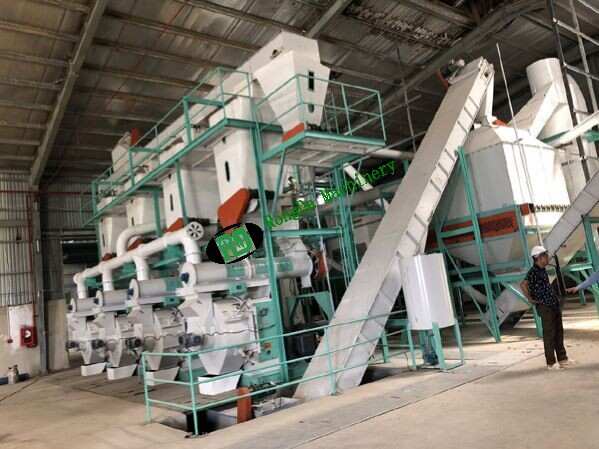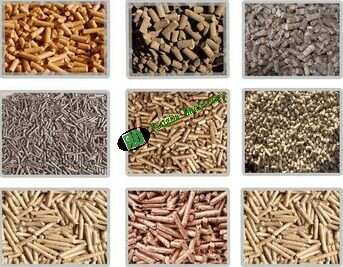Welcome to Rongda Machinery Co., Ltd
Toggle Navigation
As global industries pivot toward environmentally conscious practices, innovative machinery continues to reshape how we approach energy production and resource utilization. Among these technological advances, pellet mills have established themselves as cornerstone equipment in the renewable energy landscape and various manufacturing sectors. This comprehensive guide examines the operational principles of pellet mills, their diverse applications, and their growing significance in sustainable industrial practices.

A pellet mill represents sophisticated machinery engineered to transform loose biomass materials and other raw substances into compact, standardized pellets through mechanical compression. This equipment processes diverse feedstock including timber waste, agricultural byproducts (such as wheat straw, barley husks), and various organic waste streams, converting them into dense, cylindrical pellets optimized for storage, transportation, and utilization.
The pellet mill market encompasses equipment ranging from compact units designed for artisanal operations to massive industrial systems capable of processing tons of material hourly. The two predominant designs include flat-die pellet mills and ring-die configurations, each engineered with specific advantages tailored to different operational requirements and production scales.
Understanding pellet mill functionality requires examining the sequential stages that transform raw materials into finished products:
Raw Material Preparation: Initial feedstock, typically consisting of sawdust, wood shavings, crop residues, or alternative organic matter, enters the system following preliminary processing. This preparation phase often includes moisture adjustment and particle size reduction to optimize pellet formation.
Mechanical Compression: The heart of pellet mill operation occurs within the die-roller assembly. Raw materials undergo intense pressure between rotating rollers and the die surface. The die, featuring precisely engineered apertures, forces material through cylindrical channels, creating uniform pellets. This high-pressure environment generates the density essential for superior heating characteristics.
Temperature Management: Newly formed pellets emerge hot and malleable from the compression process. Advanced cooling systems, incorporating forced air circulation or specialized cooling chambers, reduce pellet temperature while strengthening their structural integrity.
Final Processing: Cooled pellets proceed to packaging systems where they're prepared for distribution. Quality pellets maintain structural stability during handling and demonstrate consistent combustion characteristics.
Pellet mill technology serves multiple sectors through various specialized applications:
Renewable Energy Generation: Pellet mills primarily support biomass fuel production, creating alternatives to conventional fossil fuel sources. These biomass pellets serve residential heating systems, commercial boilers, and utility-scale power generation facilities. Their carbon-neutral characteristics and reduced emissions profile position them as preferred alternatives to coal and petroleum products.
Agricultural Feed Processing: Livestock and aquaculture industries rely heavily on pelletized feed products. Pellet mills process grain combinations, protein sources, and nutritional supplements into digestible, uniform feed pellets. This pelletization enhances feed conversion efficiency and simplifies storage and distribution logistics across agricultural operations.
Engineered Wood Manufacturing: Industrial pellet mills contribute to composite wood product manufacturing. Processed wood pellets provide consistent raw materials for particleboard, medium-density fiberboard, and related engineered lumber products. The uniformity achieved through pelletization improves product quality and manufacturing efficiency.
Circular Economy Solutions: Modern pellet mills support waste-to-resource conversion initiatives. Agricultural residues, industrial byproducts, and organic municipal waste streams become valuable energy sources through pelletization. This approach simultaneously addresses waste management challenges while creating marketable energy products.
Precision Agriculture Applications: Agricultural sectors utilize pellet mills for creating slow-release fertilizer products and soil amendments. Pelletized nutrients provide controlled release characteristics, improving crop yields while reducing environmental impact through reduced nutrient runoff.
Pellet mill technology delivers multiple operational and environmental benefits:
Environmental Stewardship: Pellet production significantly reduces environmental impact through waste stream diversion and fossil fuel displacement. The carbon-neutral nature of biomass pellets contributes to greenhouse gas reduction initiatives while supporting renewable energy targets.
Economic Optimization: Pellet mills create value-added products from low-cost or waste materials. This transformation generates new revenue opportunities while reducing disposal costs. The concentrated energy density of pellets commands premium pricing compared to raw biomass materials.
Operational Efficiency: Pelletized materials offer superior handling characteristics compared to loose biomass. Their uniform size, reduced moisture content, and high energy density improve combustion efficiency while simplifying logistics and storage requirements.
Resource Sustainability: Biomass pellet production utilizes renewable resources that regenerate naturally, contrasting with finite fossil fuel reserves. This sustainability aspect supports long-term energy security while reducing dependence on imported energy sources.
Market Versatility: Pellet mill technology accommodates diverse feedstock materials, enabling operators to adapt to seasonal availability and market conditions. This flexibility ensures consistent production despite variations in raw material supply.
The pellet mill industry continues evolving as environmental regulations strengthen and renewable energy demand increases. Technological advances in die design, automation systems, and quality control enhance production efficiency while reducing operational costs.
Emerging applications include specialized pellets for pharmaceutical excipients, 3D printing materials, and advanced biofuel production. These developments expand pellet mill utility beyond traditional energy and feed applications.

Pellet mill technology represents a critical bridge between waste materials and valuable products, supporting industries from renewable energy to sustainable agriculture. As environmental consciousness drives industrial transformation, pellet mills provide practical solutions for waste reduction, energy production, and resource optimization.
The versatility and efficiency of modern pellet mills position them as essential equipment for organizations pursuing sustainability goals while maintaining economic viability. Understanding pellet mill capabilities enables informed decision-making regarding equipment selection and application development.
As we advance toward a circular economy model, pellet mills will continue playing pivotal roles in converting waste streams into valuable resources, supporting both environmental objectives and business profitability across diverse industrial sectors.